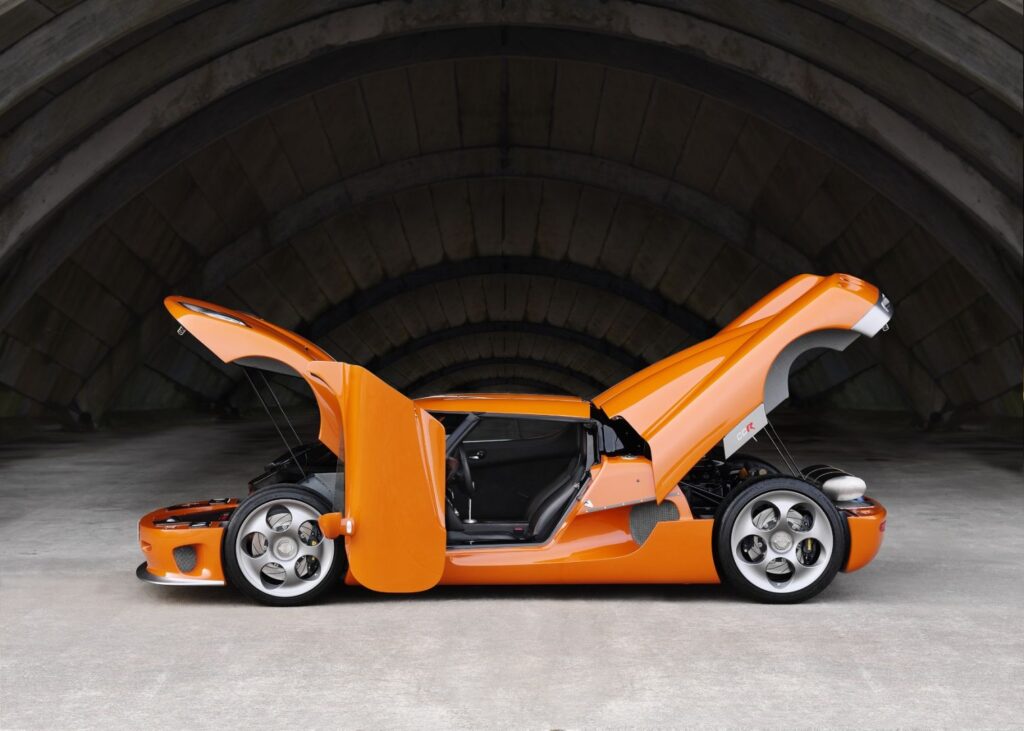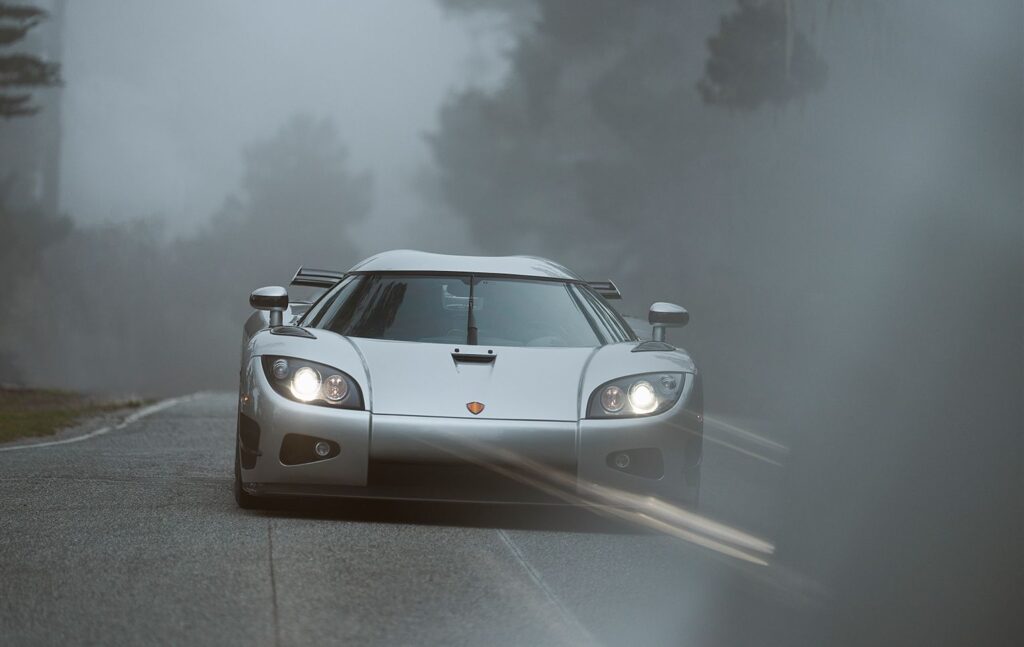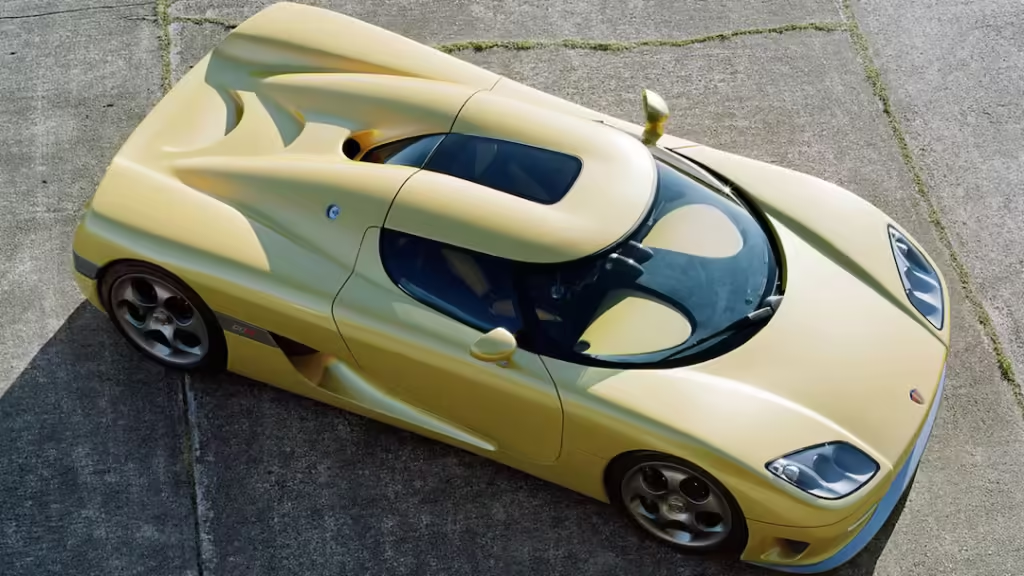Hyper car – Very few car manufacturers caught up with pure engineering and performance as exuberantly as the Swedish brand. Here is the CCR, which hit roads in 2004, another milestone model after CC8S, a result of persistent pursuit in terms of speed, innovation, and exclusivity. Here, this Koenigsegg CCR positioned this supercar at the heart of design and technological innovation, following the same competitive plane in the arena of hyper cars.
Design and Styling
That was not enough to prevent it from losing what the ancestor car-the CCX should have been, but Koenigsegg CCR stretched the concept into an aerodynamic optimum from there. A body of a car constructed from lightweight carbon fibred depicted futurism with advanced performance. The Koenigsegg CCR had an aggressive front with a gigantic intake area with the new design on the revised rear. It featured an oversized spoiler-no cosmetic changes, however, but it achieved greater downforce at higher velocity.
Altogether, the design was a very true expression of Koenigsegg CCR attempt to marry beauty with functionality. Every flex and curve chiseled only in pursuit of improved airflow, and it was only that which would leave the resulting car as aerodynamically-looking as possible. The cabin was also dazzling in showing an improved, driver-focused design with advanced instrumentation and opulent material, aptly mixing high-tech functionality and comfort.

Special/Tuned Editions
Originally a sky blue CCR with a bi-colored interior of white and blue, the Koenigsegg CCR Revo underwent significant factory changes in 2012 at the owner’s request. Compared to the original car, it had a lot of modifications, like a clear-coated carbon fiber body with candy red accents, a red and black bi-color interior, a fire extinguisher, an updated steering wheel, CCX rear diffuser, side skirts, fog lights, front splitter, and wheels in addition to the twin-deck F1 rear spoiler found on the Koenigsegg CCR. Superchargers and an upgraded engine management system were also added to the vehicle’s powertrain.
EDO Competition CCR Evolution
In 2011, a CCR was extensively modified by EDO Competition, a German tuning business. They said that although CCR was initially yellow, the factory had already upgraded it with silver exterior paint, 11-spoke Koenigsegg CCR wheels, side skirts, front splitter, and rear spoiler from Top Gear in 2008.[9] In order to maximize power and enable the vehicle to reach its maximum torque, the manufacturer first adjusted the drive ratio and ECU before implementing the Koenigsegg CCR. The driving ratio was increased after disassembling the six-speed gearbox completely and swapping out the plastic bushings for Uniball ones. Power increased from 815 to 903 PS (600 to 664 kW) as a result of the remapped ECU.

Speed record
With a theoretical top speed of around 395 km/h (245 mph), Koenigsegg declared the CCR to be the fastest production automobile when it made its debut. The assertion was tested on February 28, 2005, at the Nardò Ring in Italy. A group of five engineers and mechanics from Koenigsegg, led by founder Christian von Koenigsegg, achieved a top speed of 387.87 km/h (241.01 mph) in a standard CCR, driven by Loris Bicocchi.
This broke the record for the fastest production car (if “production car” is defined appropriately). A prototype of the much-anticipated Bugatti Veyron, however, stole the show in April 2005, just after the CCR claimed the record, with a top speed of over 400 km/h (250 mph). The production vehicle reached 408.47 km/h (253.81 mph).
Power and Performance
The CCR featured a high-performance 4.7-liter V8 engine-that was sufficient to develop 806 hp and awesome 920 Nm of torque. But there is more: the powertrain, excluding bringing the speed from zero to 100 km/h or 62 mph in just 3.2 seconds after getting itself to the top speed of 390 km/h or 242 mph. This, in fact, led to one of the fastest production cars in the stock market and also broke numerous records not only for a car but also for the whole world once it surprised the automobile world with its peculiar design.
What struck me was the engineering genius from Koenigsegg in designing the car, which weighed approximately 1,200 kg (2,645 lbs.). The power-to-weight ratio that bristled with brilliance guaranteed agility and responsiveness. There was no other car that excelled-it was not just a straight-line performer but a contender at twisty roads and racetracks.

Technological Advancement
The Koenigsegg CCR already had a few edgy technologies onboard to beat the competition. But the most innovative of them all is probably the use of a calmness engine system that uses hydraulic actuators to open valves. Such advanced technology allows for flexibility in terms of tuning, but it always happens to improve performance and reduce mechanical complexity.
However, what made the CCR really famous was its six-speed manual transmission – that is something to gain that sense of involvement when on the road. Moreover, it came with an advanced braking system: carbon-ceramic discs which provided exemplary safety and performance when stopping on the brakes.
Heritage and Significance
They are also very few units of CCR produced which makes it even more of a collector’s car. However, the impact on the hyper car market is such an overwhelming impression that its influence can be noticed and followed in the next designs and engineering of models not only from Koenigsegg but also across the automotive industry. In so many ways, the CCR has helped give legitimacies to the hyper car category that a perfect speed-inducing design vehicle can exist.
Conclusion OF Koenigsegg CCR
It was a hallmark in the innovation of automobiles as it involved the advanced engineering, great designs, and fiery performance. Arguably, in some of its best moments was when it served to be one of the fastest and technologically sophisticated cars at that point in time. Not only is it what Koenigsegg’s vision presented, but as an omen of the untold prosperity that can be achieved with passion and engineering excellence. Of course, today, it is an epitome of automotive history, a masterpiece of grandeur, and treasured by enthusiasts and collectors around the world.
Pingback: Top 10 Most Famous Koenigsegg CC8S - CARS CRAFTERS